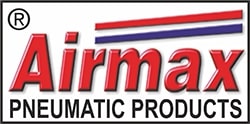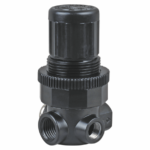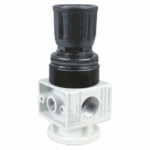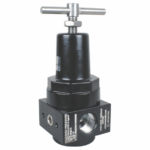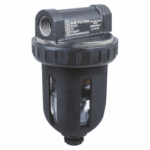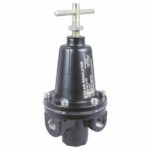Enhancing Safety and Speed in Pharmaceutical Machinery with Pneumatics

Pharmaceutical machines must operate with accuracy, speed, and safety to ensure that every drug is produced efficiently and without error. In such a sensitive industry, speed helps meet high production goals, while security ensures that there is no contamination or product loss. This is where pneumatics comes in — a technology that uses compressed air to deliver fast, smooth, and reliable motion.
Think of the Pneumatic Cylinder as the “driving force” of these systems, which gives speed with clean energy and minimal breakdown. Compared to traditional mechanical or electrical systems, pneumatics offer greater flexibility and require less maintenance. In this blog, we’ll explore how pneumatic air cylinders enhance pharmaceutical machinery — from working principles and types to benefits and essential maintenance.
What is a Pneumatic air Cylinder?
A Pneumatic air cylinder is a device that converts compressed air into linear or rotary motion, enabling it to move, press, pressurize, lift, or fill with precision. In simple words, it turns the power of air into a mechanical function. Imagine how a syringe plunger operates when you push air through it; this is the principle behind an air cylinder, only on an industrial scale. Used in pharmaceutical machinery, these cylinders ensure smooth, clean, and controlled movements are required to handle sensitive processes such as tablet pressing, bottle filling, and packaging.
Basic Component of an Air Cylinder:
An air cylinder consists of a cylinder tube, a piston, a rod, and end caps. The tube acts as a “home” for the piston, guiding its speed. The piston is the moving part that works, while the rod connects it to the machine. End caps seal the system, keeping the air pressure stable, such as holding air safely to the ends of a syringe.
How it Works:
Compressed air enters the cylinder through an inlet, causing pressure that moves the piston further. This speed runs the operation of the machine, such as pressing tablets, shaking conveyor belts, or filling capsules. When the air is released, the piston returns to its original position, often aided by a spring in a single-acting cylinder. The stronger the wind pressure is, the more tremendous the speed, both in the same precise and powerful pharmaceutical applications.
Types of Pneumatic Cylinders used in Drug Machinery:
Pharmaceutical machinery uses a variety of pneumatic cylinders depending on the speed, force, and space requirements of each process. From the tablet to the packaging and the bottle filling, each task demands a specific cylinder design to ensure motion, precision, and reliability. The two most common categories are single-acting and double-acting cylinders, while rodless and compact cylinders, such as special versions, are used where location or layout barriers are present.
Single Acting vs Double Acting Cylinder:
In a single acting cylinder, compressed air pushes the piston in one direction, and a spring returns it to its original position. These simple push or lift operations are ideal for operation.
In contrast, a double acting cylinder uses air pressure on both sides of the piston, allowing controlled motion in both directions. Packaging or vial handling, such as constant, is perfect for repeated functions.
Single-acting types are cost-effective and simple, while double-comprehensive types provide greater speed, accuracy, and power.
Rodless and Compact Cylinder:
Rodless cylinders move the piston without an external rod, saving space and
eliminating collision risk in compact machines. Meanwhile, the Compact Cylinder is designed for devices with limited installation space.
In pharmaceutical machinery, these types are widely used in packaging lines, vial capping units, and small filling systems. Their space-efficient design and seamless integration with automation setups make them a popular choice for modern, high-speed production environments.
Why Pneumatics are Ideal for Pharmaceutical Applications:
In pharmaceutical manufacturing, every motion must be clean, safe, and precise. Pneumatic systems meet these demands perfectly, offering a contamination-free, operator-safe, and high-speed solution for a variety of applications, from liquid filling to packaging. Their ability to combine speed with control makes pneumatics the preferred choice for pharmaceutical machinery worldwide.
Clean and Contamination-Free Operation:
Pneumatic systems run on compressed air, meaning there’s no oil, sparks, or electrical interference near the product. This ensures a sterile and contamination-free environment, especially important in operations like sterile liquid filling or tablet coating.
Safety for Operators and Products:
The smooth, cushioned motion of pneumatic cylinders prevents damage to fragile glass vials and tablets. It also reduces strain and minimizes the risk of operator injuries, making it a safer technology for both people and products.
High Speed and Precision:
Pneumatics deliver fast, repeatable, and consistent motion, which boosts overall production speed. Tasks such as filling, capping, or sorting on pharmaceutical lines benefit from this high precision, ensuring each product is handled accurately and efficiently.
How Air Cylinders Enhance Speed in Pharmaceutical Machinery:
Air cylinders play a crucial role in increasing efficiency and throughput in pharmaceutical production. By converting compressed air into fast, controlled motion, they enable machines to operate at higher speeds without compromising safety or precision. From filling to packaging, air cylinders ensure reliable, repeatable performance across multiple operations.
Faster Packaging Lines:
Air cylinders power tasks like capping, bottling, and blister packing at a high repetition rate. This reduces the need for manual intervention and significantly increases production throughput, allowing packaging lines to keep up with demand.
Smooth and Precise Filling Operations:
Cylinders provide accurate, repeatable volume control, preventing spillage and ensuring dosage accuracy. This level of precision is essential for maintaining product quality and meeting stringent pharmaceutical compliance standards.
Reducing Machine Downtime:
Durable, well-maintained air cylinders require less frequent maintenance, minimizing machine stoppages. Their reliable performance over long operating cycles ensures that production schedules remain consistent, keeping pharmaceutical lines efficient and cost-effective.
How Pneumatics Improve Safety in Pharmaceutical Operations:
Pneumatics not only enhance speed but also significantly improve safety in pharmaceutical manufacturing. By combining controlled motion with automation, they protect both products and operators while maintaining production efficiency.
Controlled Force with Soft Motion:
Air cylinders handle delicate products, such as glass vials or tablets, with gentle, precise force. This soft motion reduces breakage, spillage, and product loss, ensuring that fragile items are transported or processed safely without damage.
Integration with Safety Sensors:
Pneumatic systems can integrate with safety sensors, automatically halting operations when an obstruction is detected. For example, emergency stops on packaging lines prevent accidents and ensure zero-error production, combining operator safety with automated efficiency.
Key Applications of Pneumatic Cylinders in the Pharma Industry:
Pneumatic cylinders are the workhorses of pharmaceutical machinery, enabling fast, precise, and reliable operations across multiple applications.
- Filling Machines: Air cylinders ensure accurate liquid filling at high speed, reducing spillage and maintaining dosage consistency.
- Packaging Lines: They drive operations like pushing, sealing, and capping, increasing throughput while minimizing manual labor.
- Sorting and Conveying Equipment: Cylinders move products efficiently along conveyor belts, keeping production lines smooth and organized.
- Tablet Press Machines: Controlled piston motion guarantees uniform tablet thickness and hardness, ensuring quality and compliance.
These examples illustrate how pneumatic cylinders help pharmaceutical manufacturers maintain precision, speed, and safety in every stage of production.
How to Choose the Right Air Cylinder for Your Machinery:-
Selecting the right air cylinder is essential for efficient and safe pharmaceutical operations.
Material and Compliance Considerations:
Choose stainless steel, FDA-approved, and corrosion-resistant cylinders to ensure durability and full compliance with pharmaceutical industry standards.
Stroke Length, Load, and Speed Requirements:
Match the cylinder’s size, stroke length, and speed to your machine’s operational needs. This prevents overloading, slow cycles, or inconsistent motion, ensuring smooth production.
Custom vs. Standard Solutions:
Standard cylinders work well for general tasks, while custom-engineered cylinders optimize performance and space in specialized pharmaceutical machinery. Custom solutions ensure maximum efficiency in automated production lines.
Maintenance Tips for Long-Term Performance:
Proper maintenance ensures pneumatic cylinders operate efficiently and reliably over time, minimizing downtime and protecting production quality.
Regular Cleaning and Inspection:
Clean cylinders routinely and inspect for wear or damage. This prevents contamination in pharmaceutical processes and ensures smooth, safe operation.
Lubrication and Wear Check:
Regular lubrication keeps cylinders moving smoothly and reduces friction. Checking for wear on seals and pistons extends the service life of the equipment.
Quick Replacement of Worn Components:
Replace worn or damaged parts promptly to maintain consistent performance, prevent production interruptions, and keep machinery running at peak efficiency.
Also know about “Pneumatic Cylinder Seals and Materials: How They Impact Performance”
Future Trends in Pneumatic Systems for Pharmaceutical Machinery:
The future of pneumatic systems in pharmaceutical machinery is moving toward smarter, more connected solutions. Smart cylinders with built-in sensors enable real-time monitoring of performance, while IoT-enabled predictive maintenance helps reduce unexpected failures and downtime. Greater integration with automated production lines ensures faster, safer, and more efficient operations, allowing manufacturers to meet growing demands while maintaining compliance and product quality. These trends highlight how pneumatics continues to evolve, combining innovation, reliability, and precision for next-generation pharmaceutical manufacturing.
Conclusion
From beginners to industry experts, understanding pneumatics in pharmaceutical machinery reveals how air cylinders enhance speed, safety, precision, and reliability across production lines. By integrating advanced pneumatic solutions, manufacturers can boost efficiency while protecting both products and operators. Explore our range of high-performance Pneumatic Cylinders designed for pharmaceutical machinery. Visit Airmax Pneumatics Ltd. and discover smarter, faster, and safer solutions for your production line.
